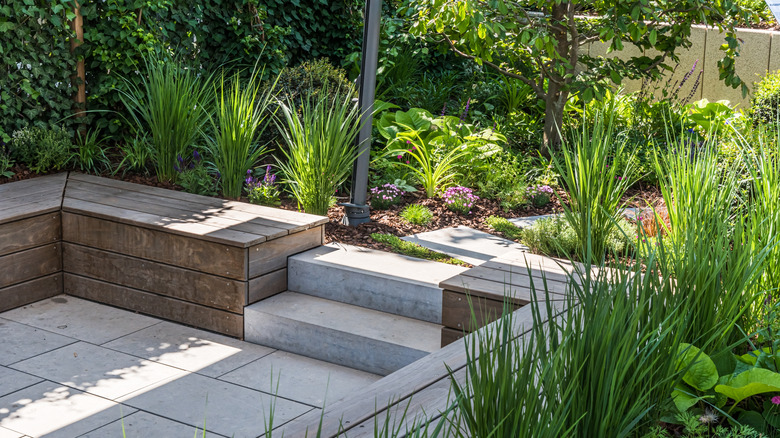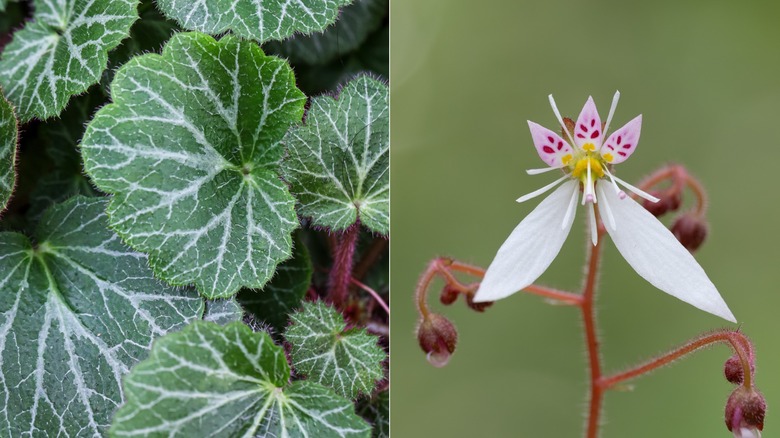Carpet Shady Areas With A Thick Ground Cover That Practically Takes Care Of Itself
Finding plants that will handle low light conditions and still look lush and healthy can be a challenge if you have shady areas in your yard. The quest is even more difficult if you're after a plant that flowers well without direct sunlight. Luckily, there's a gorgeous dense ground cover that has pretty white flowers and will absolutely thrive in the shade. What's even better is that this plant will practically take care of itself, so it's perfect if you seek a low-maintenance garden addition. Strawberry begonia (Saxifraga stolonifera) fits the bill perfectly and will spread to form a thick, lush carpet over those shaded parts of your yard.
Strawberry begonia, also commonly known as creeping saxifrage, strawberry geranium, mother of thousands, or strawberry saxifrage, will scramble over the ground quickly using red runners, which are similar to those produced by strawberry plants. When these contact the soil, they'll put down roots, creating new baby plants. The foliage is quite attractive, with heart-shaped leaves that exhibit prominent silvery veins, not unlike those of the rex begonia — a popular houseplant you can grow in low light. Creating even more contrast, the leaves are red underneath. This species also produces panicles of small white flowers that rise above the foliage in spring on stems that can be as tall as 18 inches.
Ideal growing conditions for strawberry begonia
This appealing species will thrive in USDA hardiness zones 6 through 9. It prefers full to partial shade and well-drained soil that contains plenty of organic matter. You'll also find that this is one of a range of beautiful plants that will thrive in clay soil. What you'll love about this plant is that it's practically disease free, although it's best to protect the plants from aphids, slugs, and spider mites. Once strawberry begonia becomes established, you can just let it do its thing as it spreads around your garden.
When your strawberry begonia flowers in spring, take a closer look at the tiny blooms — they have the most interesting form. There are two long pure white petals at the base and three or four smaller white-and-pink petals at the top, showcasing nature's artwork at its finest. If you want to grow this delightful species elsewhere in your yard after planting, simply find some runners that have developed roots, carefully dig them out, and then sever them from the main plant. You can then pop these in another suitable shady location. Now that you have this outstanding species on your radar, you might like to explore other ground cover plants that love the shade to add some variety to your garden.

